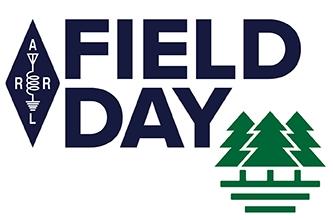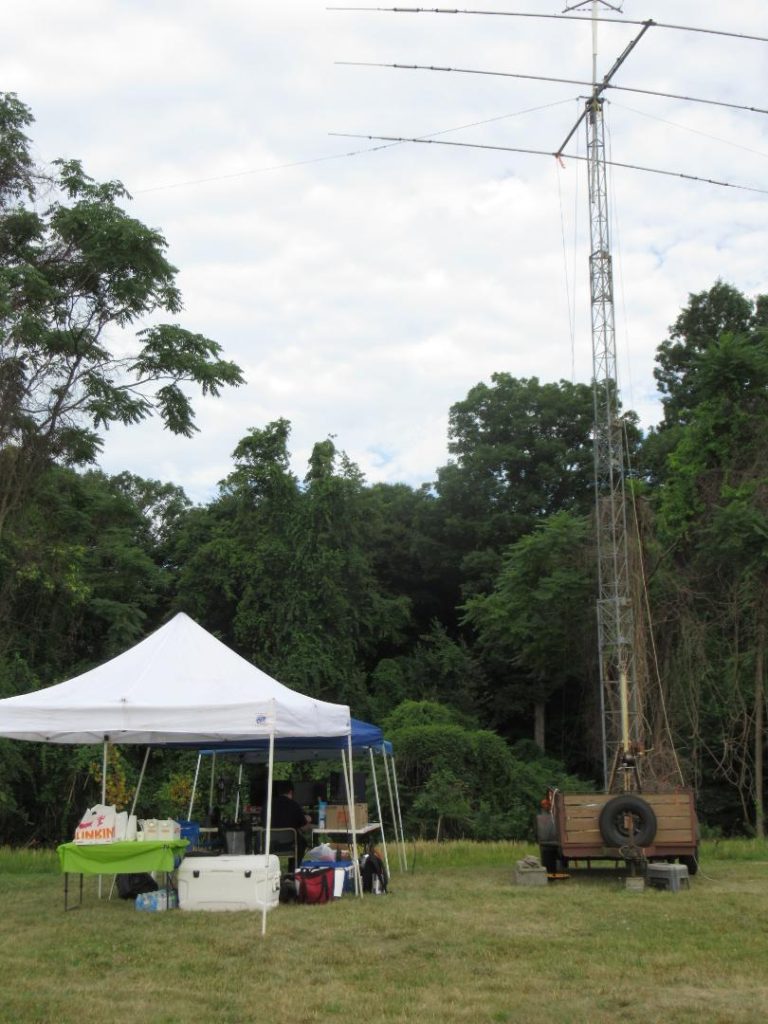With a License: Via W3FT Repeater or Echolink
The BARC Repeater System is available for anyone to use.
input frequency of 146.07 Mhz and output is 146.67. The PL tone is 107.2.
With multiple receive sites in the Greater Baltimore area, coverage is excellent. A big thank you to Phil N3CDY for his years of effort in maintaining the system.
 We now feature EchoLink connection to our FM repeater. Connect to N3FQC-R. Thank you Don N3FQC!
We now feature EchoLink connection to our FM repeater. Connect to N3FQC-R. Thank you Don N3FQC!
W3FT – BARC Repeater Policy
Repeater Usage Guidelines:
The repeater has a primary input frequency of 146.07 mhz and output is 146.67. The PL tone is 107.2.
Introduction:
The Baltimore Amateur Radio Club at present has a repeater on the 146 mhz band. The remainder of this guide deals with the use of the BARC repeater. Due to the geographical locations of the repeater sites, many people are able to monitor our transmissions. It therefore behooves us to use the repeater in such a manner that our machines will continue to be an example of good operating procedures. In order to encourage a high standard of operating practice on the BARC repeater, the following is to be used as general guidelines for use of the repeater.
The FCC requires control stations to monitor the repeater to insure compliance with the rules. We would not like to hear illegal or sloppy operating habits on our repeater, because such problems could cause FCC actions against us or the Amateur Radio Service in general. Please remember how close Baltimore is to Washington, DC. The control stations will knock down the repeater when questionable action occurs. The policy is act first and ask questions later. In most cases, we will try to contact stations off-the-air, rather than discuss any difficulties over the repeater.
In general, the club does not desire to be restrictive about how the repeater is used. Repeaters are a part of amateur radio, and ham radio is a hobby and should be FUN. Being overly restrictive can only reduce the pleasure we all get from operating on amateur frequencies. However, common sense requires that some basic guidelines be followed. Much has been said about some repeaters being “ragchew” and others being called “calling” repeaters. Our repeater fits into neither of these extremes. The most important thing to remember is common courtesy. There are literally hundreds of hams using our repeater; please keep this in mind. Any individual who “hogs” a repeater channel for hours on end and prevents other hams from using the machine is robbing other hams from enjoying the same communication privileges he is exercising. Standing by for breakers, unfortunately, is not always sufficient to alleviate the problem. Most repeater users are not going to break into a conversation merely to start a different casual conversation with someone else. If a group desires to conduct a long discussion over the air, a recommended procedure would be to chat for 10 minutes or so then clear the channel for five minutes. If no one else uses the repeater in that time, then feel free to continue for a little while. Have some regard for others who may desire to chat with someone other than yourself. Surely the time of day has a lot of influence on how long someone should chat; please use good judgement on how you would feel were you listening and not chatting.
Club officials do not wish to set down rules and regulations stating how long anyone may talk, given various time periods. Keep the busy hours in mind, and let’s not categorize the repeater as “ragchew” or “calling” but merely as a repeater. Be friendly, courteous, and remember that we are all in this hobby for its enjoyment together. Part 97.87 of the FCC regulations state that an amateur station shall be identified by with its call sign at the end of a QSO and at intervals not to exceed 10 minutes during the QSO.
The practice of transmitting the call signs of one or both stations each time you begin or end a single transmission is unnecessary, time consuming and tedious. We need to conserve our valuable resources: air time. Under all circumstances, IDENTIFY YOURSELF whenever you transmit, even if it is only a “kerchunk”.
FCC regulations prohibit the transmission of: obscene, false, unidentified or interfering transmissions or signals. BARC has an active program for locating stations intentionally transmitting such garbage. Our policy is that offenders shall not be warned and all information shall be turned over to the appropriate agency, such as the FCC, for enforcement. When hearing such illegal transmissions, the best policy to follow is to refrain from transmitting unless informed otherwise. Any tracking information gained is always solicited and appreciated, and should be given to the repeater committee chairman or other club officer.
This material is excerpted directly from the BARC Handbook and edited only to correct facts of technical nature since original publication.
Baltimore Traffic Net BTN, New Ham Net, Roundtable NET
Meeting daily at 6:30 PM (local) on the 146.670-/107.2 BARC repeater, backup is the Mobileers repeater 146.805-/107.2.
The Baltimore Traffic Net (BTN) is a directed, local net affiliated with ARRL’s National Traffic System (NTS), and supporting RRI. Its purpose is to handle message traffic throughout the coverage area of the repeater. It provides an opportunity for amateur radio operators interested in traffic handling to improve their skills and provide a service to the general community. Liaisons from the Maryland Emergency Phone Net (MEPN), WL2K, Maryland Delaware DC (MDD), Digital Traffic System (DTS) are available. <— Source of these two paragraphs.
Suspended NEW HAM NET 2 M Thursday 1900 0700 PM after BTN Baltimore Local time 146.670- PL Tone 107.2 W3FT BARC repeater
Net Control is Warren KN6HXP. New hams and help for new hams. Local Amatuer Info and news
Suspended ROUNDTABLE NET 2 M Tuesday 1900 0700 PM after BTN Baltimore Local time 146.670- PL Tone 107.2 W3FT BARC repeater
Net Control is Warren. KN6HXP. All are welcome
Without a License – Listen to W3FT Repeater on Broadcastify
Without a License: Listen to W3FT Repeater on Broadcastify. The link is https://www.broadcastify.com/listen/feed/38174 Click on the play ICON
QSL Policy
QSL Policy: We can only honor confirmation requests for contacts 2016 or prior. For those QSL cards, please provide SASE for stateside requests; provide SAE and $1 USD if DX. For contacts after 2015, listen for operator instructions.

ARRL Field Day for 2025 was June 28-29, 2025. This is the largest on-air amateur radio event in North America. Members of our club participated with ARCNEM (Amateur Radio Club of the National Electronics Museum) in 2025.

. An annual event by ARCNEM led this year by Tom K3YH
and Fred AI3Z with BARC participation by Ed KC3YFZ and Mark K3ABZ.
